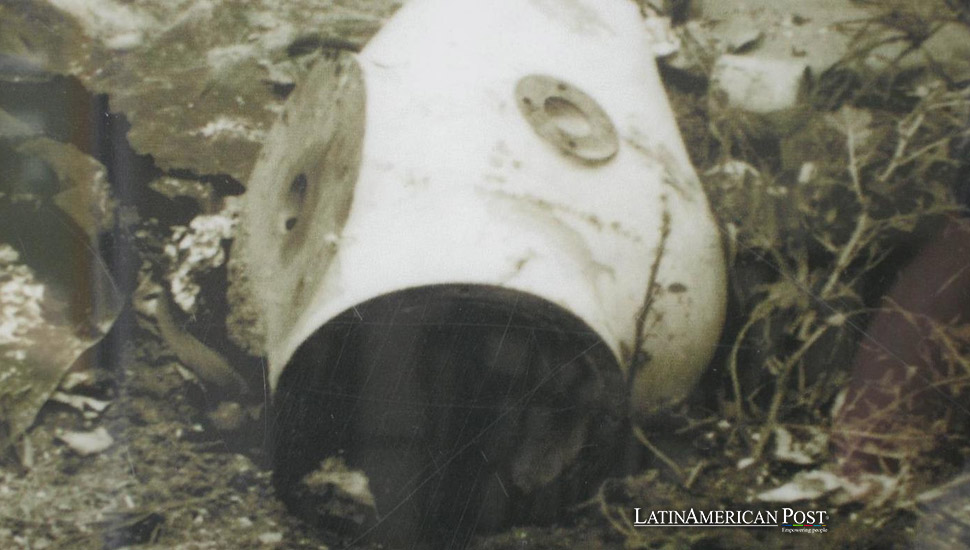Brazil’s Forgotten Tragedy: The Allure and Horror of the Goiânia Disaster

Four decades ago, a tragedy unfolded in the heart of Brazil that shocked the world with its silent, deadly force. Goiânia’s radiological accident, one of the most devastating nuclear incidents in Latin American history, has since faded into the shadows of forgotten horror stories, yet its allure remains disturbingly irresistible.
The Deadly Blue Glow
It was the 1980s in the Brazilian city of Goiânia, a seemingly ordinary town, where a series of devastating events would forever mark the region with death and tragedy. This is not a tale that starts with explosions or a natural disaster; instead, the horror began with a faint blue glow that fascinated and ultimately killed many.
In September 1987, scrap metal scavengers discovered a radioactive source from an abandoned radiotherapy unit. Unbeknownst to them, the cesium-137 they unearthed would unleash a deadly force. The material, glowing eerily blue in the darkness, seemed like something otherworldly, mesmerizing all who encountered it. As the scavengers dismantled the machine and distributed the glowing powder among family and friends, they unknowingly sealed their fates.
What began as simple curiosity turned into mass radiation poisoning. The blue glow, which had enchanted so many, was soon causing intense physical illness. The victims, most unaware of the deadly danger they faced, exhibited symptoms of nausea, vomiting, and burns. Four deaths would eventually be attributed to the accident, with hundreds more suffering from radiation exposure. This was no minor incident—this was a tragedy of monumental proportions, yet it has since slipped away from public consciousness.
How Memory Fades but Consequences Linger
The Goiânia accident, though one of the most significant radiological disasters, has fallen into obscurity. While the immediate response was swift, with Brazilian authorities and international nuclear agencies stepping in to contain the situation, the disaster has been largely forgotten outside academic and specialist circles.
But why has this incident, which resulted in the contamination of large portions of Goiânia, multiple deaths, and the long-term displacement of families, faded from collective memory? In the aftermath, victims were stigmatized, their homes demolished, and their belongings destroyed. The accident site became a wasteland, and life for the survivors was never the same.
For many in Brazil, the tragedy remains a symbol of failed governance and the dangerous underestimation of nuclear safety. Yet, it is rarely taught in schools or discussed in public forums. While Chornobyl and Fukushima dominate global conversations about atomic disasters, Goiânia’s radiological accident has become a footnote in history—forgotten even as its consequences still affect those who lived through it.
Radiological Horror in Latin America
The Goiânia accident is not an isolated incident in Latin American history. The region has seen other horrifying, though less well-known, radiological tragedies that haunt the landscape.
In 1983, a similar incident occurred in Ciudad Juárez, Mexico, when a cobalt-60 radiation source was unknowingly dismantled and spread throughout the city, contaminating a large area. Although no immediate deaths were reported, the incident led to widespread radiation exposure and raised serious concerns about the handling of radioactive materials in Latin America.
In 1962, another radiological accident took place in Mexico City when a cobalt-60 source was ruptured, exposing hundreds to radiation. Like in Goiânia, the initial fascination with the glowing material masked its deadly threat.
While Latin America has been spared the large-scale nuclear disasters seen in other parts of the world, these silent and slow-moving radiological events are no less tragic. Often occurring in impoverished or underdeveloped areas, these disasters highlight the vulnerabilities of communities that are ill-prepared to handle such threats.
The Lingering Ghosts
For the survivors of Goiânia’s radiological accident, life has never returned to normal. The horrors of radiation poisoning have left deep scars, both physical and psychological. Those who were fortunate enough to escape death have had to live with disfiguring radiation burns, cancers, and the knowledge that their exposure to cesium-137 may shorten their lives.
The stigma surrounding radiation contamination added to their suffering. Families were torn apart, homes destroyed, and survivors ostracized by communities that feared contamination. Many lost their livelihoods, and the psychological toll of surviving such a horror has left deep emotional scars.
Interviews with survivors reveal a common thread—an overwhelming sense of abandonment by their government and the world. They recount the glowing blue substance’s allure, not knowing it was a death sentence. The trauma of that day, combined with the neglect in the years that followed, has left them in a state of perpetual mourning, trapped by memories of the accident that the world seems to have forgotten.
Why Some Horrors Are Destined to Be Repeated
The Goiânia disaster and others remind us of the dangers lurking in our cities and towns. Radiological accidents in Brazil, Mexico, and other parts of Latin America share common themes—lack of oversight, ignorance of the dangers of radiation, and slow responses by authorities. In many ways, they reflect the inequalities that plague the region. The people most affected by these tragedies often cannot protect themselves.
Despite the passage of time, the lessons from Goiânia remain relevant. The allure of glowing radioactive material, the tragic consequences of ignorance, and the devastating impact of governmental negligence continue to resonate. Without proper education, regulation, and safety protocols, these silent disasters may repeat themselves, and the world will be too slow to remember.
Also read: The Untold Story Behind Latin America’s Deadliest Airline Crash
Goiânia’s radiological accident, four decades later, is not just a forgotten tragedy. It is a cautionary tale—a reminder that the horrors we fail to acknowledge are destined to return, more terrifying and more deadly than before.





